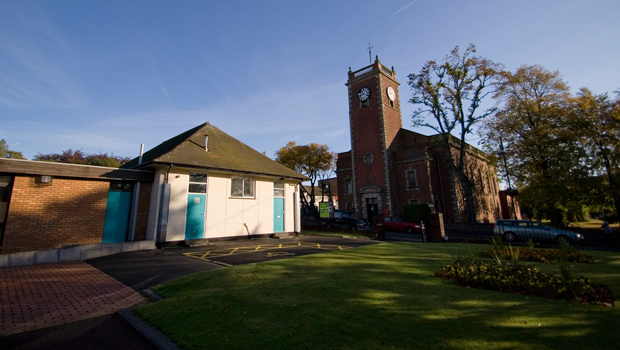The fire that devastated St Thomas’s Church in Wednesfield on the night of Saturday 18th January 1902 left the building, according to the Wolverhampton Chronicle, a “blackened ruinâ€.
St Thomas’s Church was consecrated in August 1750, endowed with voluntary subscriptions, most notably from the Gough family. It was formerly a chapel of ease belonging to St. Peter’s ecclesiastical parish of Wolverhampton, and became a parish in its own right in 1849.
On the night of the fire, Wolverhampton Fire Station received a telephone call, supplemented by a telegram, at 6.24 pm with news of the fire. The brigade got one of the fire engines out of its temporary quarters in Red Lion Street and made its way swiftly to Wednesfield. However, “their progress was considerably retarded by one or more of the steep inclines encountered on the routeâ€. This meant that at one point the men had to get off and push the engine up the hill, and the horses were exhausted by the time they reached Wednesfield. An urgent message had also been conveyed to Willenhall Brigade, but they were not able to assist as no horses could be procured. Both brigades were later criticised for the length of time they took to reach the fire.
Apparently, the spectacle was such that “the frequenters of public houses found a magnet that was even powerful enough to draw them away from the liquor they were consuming.†As well as mere spectators, however, many local volunteers rushed in to the burning building to assist, saving the Communion Plate, the choir stalls, and the surplices and cassocks, among other things. The fire brigade worked on the fire unceasingly for seven hours, leaving at two-o’clock on the Sunday morning. They left two men to watch the building until 5 o’clock.
The church was reconstructed in 1903, by F.T. Beck of Wolverhampton. Beck tried to recreate the church as it was, particularly the chancel (designed by Wyatt & Brandon) which had been there since 1842-3.
